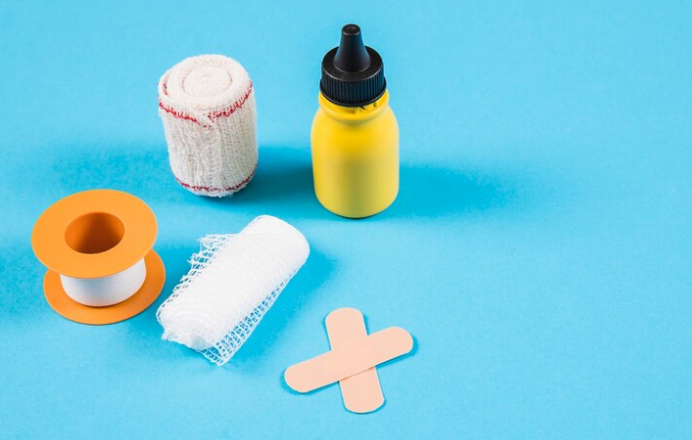Any home with little children must undertake the critical task of child proofing equipment. It’s a proactive move toward creating a safe atmosphere where kids can explore and develop without worrying about getting hurt. It’s not just a precaution. As kids learn to crawl, walk, and research, their insatiable curiosity frequently takes them into undiscovered hazards in every home. Everyday items can seriously endanger their health, from sharp furniture corners to readily available cleaning materials.
This in-depth tutorial seeks to clarify the many aspects of child proofing equipment by looking at the critical sections of your house that need to be secured and the particular tools made to keep those places safe. Parental and caregiver equipment includes furniture anchors, outlet covers, and cabinet locks, to name a few. Equipment is crucial in addressing possible poisoning risks, falls, or other injuries.

To create a house that is genuinely child-friendly, it is essential to comprehend the significance of each child proofing equipment. Creating an atmosphere where freedom and safety coexist takes more than just putting up locks and barriers. Examining the many childproofing equipment can give you the knowledge necessary to make wise choices, guaranteeing that every corner of your house adds to a safe, nurturing environment where your children can flourish.
Recognizing the Need for Child Safety Measures
How Critical Childproofing Is Childproofing equipment is crucial Since kids are naturally curious and frequently ignorant of the risks around them. Everyday household objects, such as electrical outlets and sharp corners, can present serious risks. The goal of childproofing equipment is to reduce these risks and stop mishaps.
Age and Stages of Development: As kids age, the childproofing equipment requirement changes. An infant’s needs differ significantly from those of a toddler or older child. Selecting the appropriate equipment requires understanding the developmental stages and associated dangers.
Important Locations and Child proofing equipment
Electrical Safety
Outlet covers are straightforward plastic that keeps kids from sticking anything in the outlets.
Covers for power strips that completely shield the plugs placed inside them.
Safety of Appliances and Furniture:
Corner protectors are cushiony, frequently silicone or foam guards that hide the edges of jagged furniture to keep people safe.
Furniture and appliances are fastened to the wall with anti-tip straps to keep them from toppling down on a youngster.
Safety of Windows and Doors:
Window guards: Sturdy plastic or metal bars or mesh designed to keep kids from falling out of windows.
Door locks and knob covers: Keep kids from opening doors to places that might be hazardous.
Safety in the Kitchen:
Covers for stove knobs: Keep kids from starting the stove.
Appliance latches: Prevent kids from opening refrigerators, microwaves, and ovens.
Security in the bathroom:
Toilet locks: Maintain the toilet lid firmly closed to reduce the risk of drowning and other accidents.
Non-slip mats: Added to the tub to stop people from slipping when bathing.
Generally Speaking, Home Safety
Safety gates are placed at the doors of rooms that are off-limits and at the top and bottom of stairs.
Cabinet and Drawer Latches: Keep tiny, choking objects, cleaning supplies, and knives out of children’s hands.
Organizing and Putting into Practice Child proofing Equipments: Take a walk through your house and note any possible dangers from a youngster’s viewpoint. Seek the advice of a qualified childproofed for an extensive evaluation.
Installation: It’s essential to do this correctly. Carefully follow the manufacturer’s directions and ensure all equipment is secured firmly and operating as it should.
Frequent Inspections and Maintenance: Do routine inspections to ensure child proofing equipment is still functional. As children grow and gain new talents, update your childproofing equipment accordingly.
Typical Errors and Advice
Neglecting Hazards: Pay attention to risks that seem minor. Dangers can come from little items, loose cables, and pet food.
Juggling Independence and Supervision: Although childproofing is crucial, it’s equally critical to watch over kids and impart safety knowledge to them as they get older.
Not Taking Into Account All Hazards: Look for less evident threats like toxic plants, large objects that could fall, and water sources like bathtubs or buckets.

Cutting-Edge Childproofing Equipment
Alarms and smart locks: Modern technology provides features like alarms and automatic locking systems that notify you when a window or door is opened.
Video Monitoring: Adding a degree of protection, cameras let you keep an eye on your kids’ whereabouts from a distance.
The Childproofing Aspect’s Psychological Effect
Establishing a Secure Discovery Area: Childproofing aims to establish a secure space that promotes learning and discovery.
Preventing Overprotection: Although safety must always come first, parents should not overprotect their children because it impedes their freedom and educational prospects.
A Legal and Ethical Perspective
Rental Contracts and Updates: If you rent, be aware of your rights and obligations when childproofing your home.
Product Recalls and Safety Standards: Ensure all equipment complies with the most recent safety standards and stay current on product recalls.
The Development of Child proofing Devices from a Historical Angle Examines the changes in childproofing over time, from easy do-it-yourself fixes to high-tech commercial items.
Technological Advancements: Talk about how sensors, smart locks, and other high-tech technologies have entirely changed the childproofing industry.
Childproofing Various Living Areas
Houses vs. Apartments: Adjust childproofing techniques to fit various housing arrangements, taking dimensions, design, and rules into account.
Outdoor Safety: Cover play equipment, gardens, and swimming pools when extending the childproofing process outside.
Childproofing for Children with Special Needs: Tailored Solutions: Attend to the particular needs of children with cognitive, sensory, or physical impairments.
Expert Support: Stress the significance of seeking specialist advice to establish a secure atmosphere for kids with exceptional requirements.
The Purpose of Child proofing Measures and the Role of Education in Teaching Safety: Talk about methods for educating kids about safety.
Community Resources: Provide details about classes, workshops, and web-based materials that teach about child safety and childproofing.
Childproofing’s Psychological Effects on Kids: Encouraging Independence vs. Dread: Examine how to balance keeping a house secure and encouraging overprotection or dread.
Child’s Perception: Consider how kids view safety gear and methods for integrating them into the procedure.
Childproofing for Various Childhood Stages: From Infants to Toddlers: Describe the necessary childproofing procedures for infants on the move and toddlers starting to engage in more active exploration.
Preschool to School Age: Modify childproofing techniques to suit older kids, emphasizing safety and self-discipline education.
Cutting-Edge Childproofing Items
Current Innovations in the Market: Examine the most recent advancements in childproofing goods, emphasizing their features and advantages.
Product Reviews and Recommendations: Based on customer feedback and professional perspectives, this section offers insights into the best kidproofing products that are practical and easy to use.
The Viewpoint on Childproofing Worldwide Cultural Variations: Talk about the regional variations in childproofing techniques and the lessons that may be drawn from them.
Discuss the significance of global safety regulations and their impact on developing and applying childproofing products.
Protecting Children and the Environment
Eco-Friendly Selections: Examine kid-proofing options that are both environmentally acceptable and safe for kids.
Recycling and Disposal: Advice on recycling or properly disposing of childproofing equipment after it is no longer used.
The Future of Childproofing
Forecasts and Patterns: Contemplate the future of childproofing, considering probable technological breakthroughs and shifts in public perception.
Research & Development: Identify areas where studies are being carried out to create more creative and successful childproofing solutions.
Conclusion
Child proofing is a dynamic procedure that changes as a child grows and develops instead of being a one-time job. Children’s interests and skills evolve as they age, and so do the risks they may face. Something that might not have been a big deal for a curious toddler could become a severe peril. Understanding this, parents and other caregivers need to exercise caution, periodically reevaluating their home and making the necessary updates to safety precautions. It is essential to comprehend the many kinds of childproofing devices, ranging from crucial outlet covers to sophisticated safety gates and the underlying theories behind them. With this information, a safer environment may be created that fosters a child’s growing Independence and curiosity while simultaneously protecting them.
In this continual process, education is vital. It involves educating kids about safety concepts and potential hazards so they can take an active role in their health and well-being. Furthermore, new childproofing solutions that provide increased protection and control are introduced as technology develops. Examples include smart locks and sensors that notify parents of possible threats. Accepting these developments can offer comfort and significantly lower hazards. In the end, successful childproofing combines ongoing evaluation, modification, and instruction to ensure that a child’s surroundings always provide a secure setting for discovery and education.
We hope you found this information helpful in your journey to create a safer environment for your family. At GuardWell Safety, we understand that every home is unique, and so are your child-proofing needs. That’s why we offer a Free Child-Proofing Consultation tailored to your specific requirements. Let our experts help you identify potential hazards and provide personalized solutions to make your home a secure haven for your little ones. Book your free consultation today and take the first step towards peace of mind.






